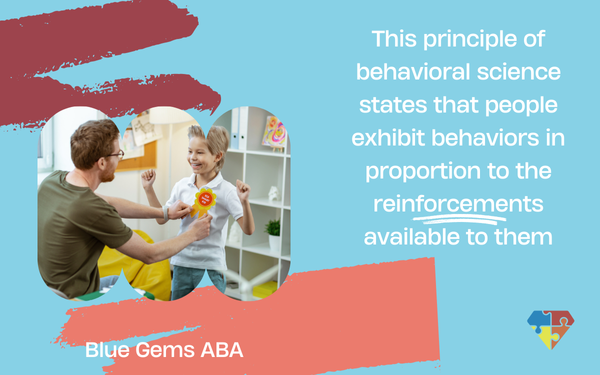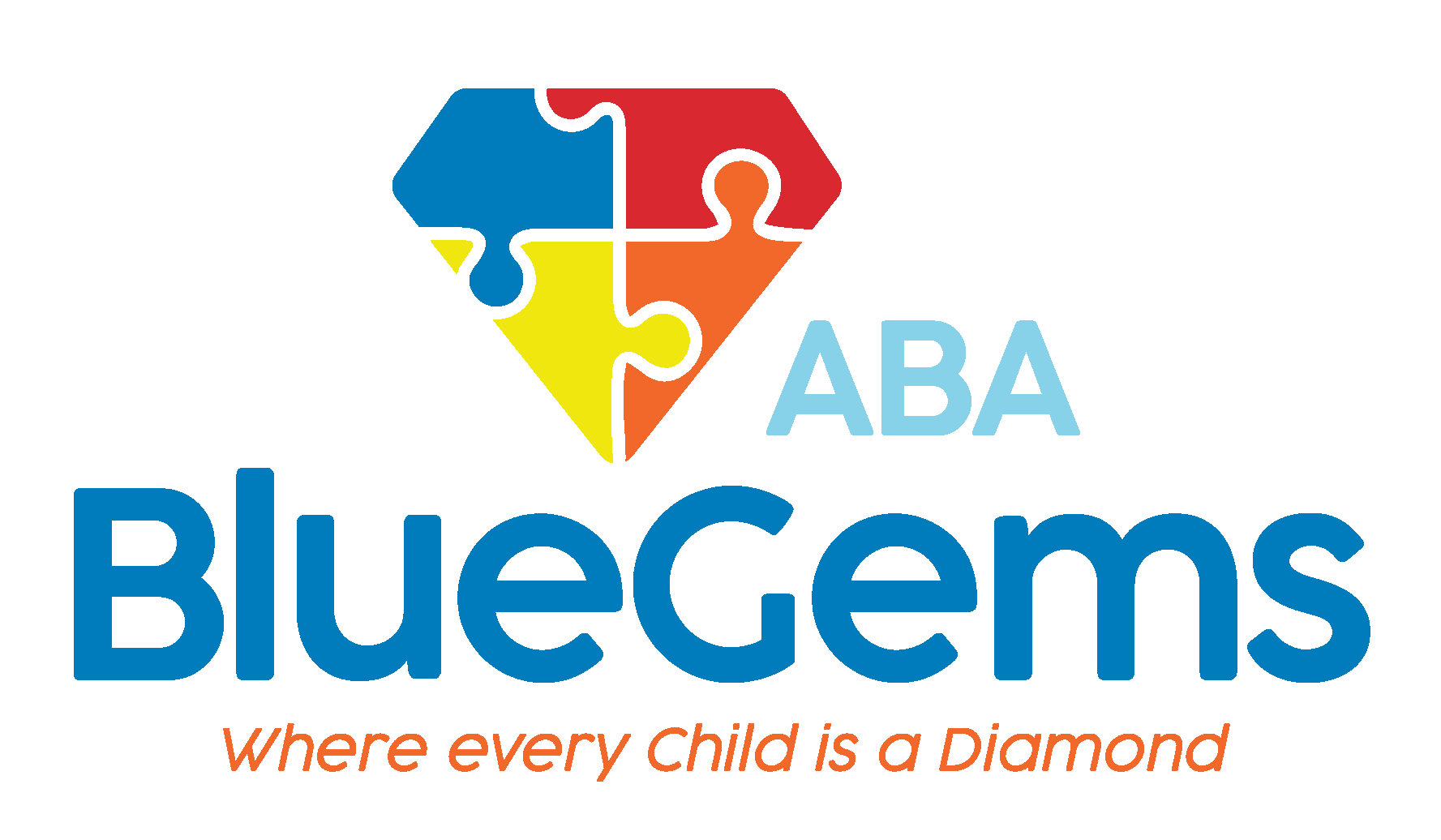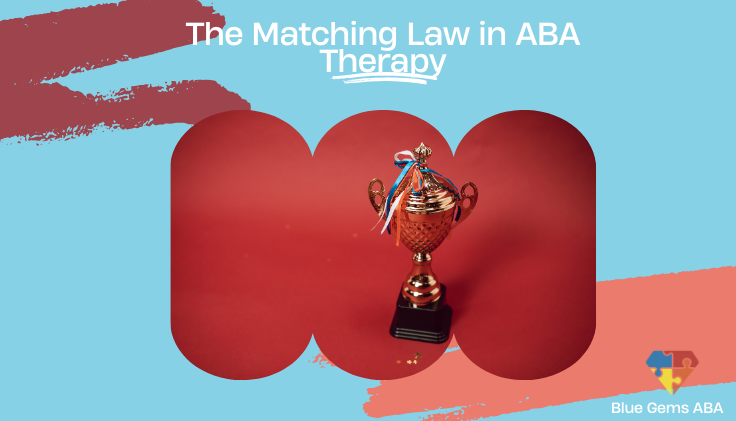The Matching Law in ABA Therapy
Applied behavior analysis, or ABA therapy, is a leading treatment for people with autism spectrum disorder (ASD). It’s rooted in scientific research and evidence surrounding behavior, including what causes certain behaviors and ways in which you can influence the response to certain inputs.
ABA therapy takes a very unique approach to learning, helping children with autism build the social and communication skills they often struggle with. In addition, it helps children with ASD modify certain behaviors that might be negative and/or harmful.
Therapists follow many different strategies and have multiple tools at their disposal to carry out the treatment plans — all of which are personalized to the unique strengths and challenges of each patient.
All ABA therapy plans integrate positive reinforcement, which is meant to encourage children to exhibit certain behaviors and to reduce the instances of those negative behaviors. To do this, therapists follow a principle known as the matching law.
In this article, we’ll detail what the matching law is and how it’s used in ABA therapy.
Table Of Contents
What is the Matching Law?
According to Richard Herrnstein, the psychologist who formulated the original version of the matching law, individuals exhibit different behaviors in proportion to the available reinforcements that every response option has. In other words, individuals will make responses across the different options available to them based on how they value each option’s associated value.
This principle of behavioral science states that people exhibit behaviors in proportion to the reinforcements available to them. Not surprisingly, it also outlines that people will give preference to behaviors that give them the best reinforcement.

Following this theory, and understanding that “value” in the context of reinforcement is very individualistic, therapists can use matching theory to develop quantitative frameworks so they can create reinforcement schedules that can positively impact patients’ decision-making processes and behaviors.
How Does ABA Therapy Use the Matching Law?
Therapists use the matching law as a guide when they’re designing and creating interventions. They do this by first understanding the unique ways each individual allocates their behavior in response to the different reinforcements, which they then use to create a treatment plan that works to maximize as many positive outcomes as possible.
Like other aspects of ABA therapy, there is a lot of data collection and analysis involved in this process. Therapists will be observing patients and recording how frequent they display certain behaviors, specifically in relation to the different reinforcements that are received.
The analysis of this data will help therapists identify the optimal reinforcement options for the different desired behaviors, as well as the reinforcement schedules. This is a process that is ongoing throughout the entirety of a patient’s experience in ABA therapy, as plans typically need to change and adjust based on a person’s progress.
Therapists also follow the matching law to help patients acquire new skills, not just in behavior modification. That’s because the principle remains the same no matter what is being taught — that people will do certain things based upon the reinforcements they deem most valuable.
| Step | Description | Example |
|---|---|---|
| 1. Observe Behavior | Monitor how often behaviors occur and under what reinforcement | Child raises hand more when praised |
| 2. Analyze Reinforcements | Determine what reinforcements drive behavior | Stickers vs. praise |
| 3. Develop Plan | Create a reinforcement schedule based on matching law | Give immediate praise after correct answer |
| 4. Implement & Adjust | Apply and tweak plan based on ongoing data | Switch from candy to tokens if needed |
| 5. Train Caregivers | Equip family to maintain behavior outside sessions | Parent uses same praise strategy at home |
How Does the Matching Law Help with Real-World Scenarios?
An important aspect of ABA therapy is ensuring that the skills and behavior modifications that are taught during sessions are applicable and translate to real-world scenarios.
ABA therapy is only truly successful if the patients are able to master those skills and behavior modifications once sessions are over and the therapist is not around. In this regard, the matching law plays an essential role.
Therapists will work hand-in-hand with parents, caregivers and other family members to equip them with strategies and tools to help support the child in those real-world scenarios. Based on the feedback and data that is given, interventions and reward systems can be adjusted to ensure the best possible outcome for the child.
Blue Gems ABA Follows the Matching Law to Support Patient Behavior
The matching law is a key principle of ABA therapy that helps to guide the creation of intervention programs and reinforcement schedules to help children with ASD gain new skills and modify certain behaviors. It’s just one tool that helps guide therapists as they seek to support each individual child the best they can.
At Blue Gems ABA, we follow the matching law and integrate many other strategies based upon each child’s unique strengths, challenges and preferences. In this way, we can better help support every child we work with.
To learn more, please contact us today.




